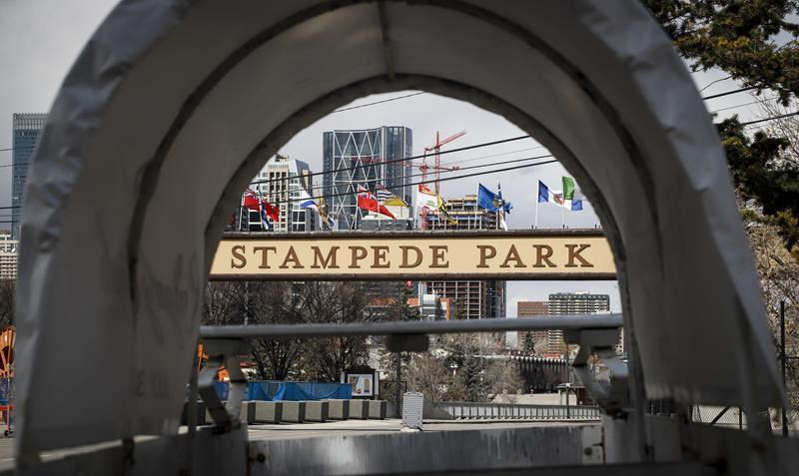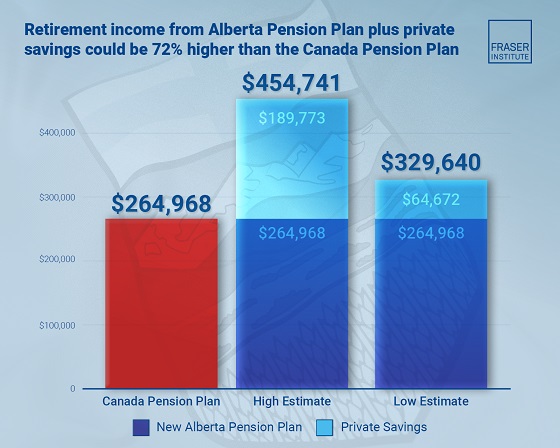Alberta
Calgary Stampede a calculated risk, potential example for post-COVID behaviour: mayor

EDMONTON — The Calgary Stampede, increasingly touted by Alberta Premier Jason Kenney as the brass ring for defeating COVID-19, won’t look like the whoop-up of years past if it goes ahead, says the city’s mayor.
Naheed Nenshi says there would still be distancing rules and other changes to keep people healthy and safe at what could be the first major Canadian post-COVID-19 festival.
“We really do have a chance to be world leaders in showing people how you can move forward with a bit of a return to normalcy, but still being very safe,” Nenshi, who also sits on the Stampede board, said Thursday.
“Certainly, this decision would be a lot easier, and this discussion would be a lot easier, if the Stampede were in August,” he added.
“(But) as long as the (COVID) numbers keep on the trajectories they’re on now, then the reward outweighs the risk.”
The world-renowned rodeo and fair is to open July 9.
Stampede spokeswoman Kristina Barnes said plans are for a scaled-down event with a priority on safety. Some indoor events could be moved outdoors.
She said talks continue on how the trademark Stampede parade could look.
The signature event, the chuckwagon races, will not go ahead for safety reasons, said Barnes. Chuckwagon racers have been on a lengthy layoff due to COVID-19.
“It would be extremely difficult to step from practice straight to a high-stakes championship,” said Barnes. “For the long-term health of the sport, it was a decision we had to make.”
The Stampede is Alberta’s signature summer event, famous for rodeos, chuckwagon races, pancake breakfasts, midway rides and alcoholic overindulgence.
In recent weeks, it has taken on political significance.
Kenney has frequently used the Stampede to symbolize a return to happier times should Albertans continue to get vaccinated and observe health restrictions.
He referenced the Stampede multiple times on Wednesday as he outlined a three-stage plan to reopen the economy and expand public gatherings — based on vaccination rates and hospitalizations.
Almost 60 per cent of Albertans 12 and older have received at least one shot.
Kenney said almost all restrictions will be lifted once 70 per cent of those eligible have had at least one vaccine dose. He said that could come as early as June 28.
Comparable provinces, including Ontario, British Columbia and Quebec, have similar phased reopening strategies, but not until later in the summer or into September
Just a month ago, Kenney’s United Conservative government was facing COVID-19 case rates that were the highest in North America.
Kenney said he might try to pull together the traditional premier’s Stampede pancake breakfast. A vaccination site on the Stampede grounds is also being explored.
Opposition NDP Leader Rachel Notley questioned whether Kenney is following science or risking public health with a speedy reopening for political reasons.
Kenney has faced plunging popularity numbers during the pandemic as well as a backlash from rural supporters and some of his UCP backbenchers over health restrictions they deem heavy-handed and punitive.
Political scientist Duane Bratt said it’s hard not to believe that the Stampede is driving Kenney’s timeline. The premier runs a huge risk if cases surge again or if the Stampede were perceived as a failure, he said.
“Everything has to go right for this. This is the most aggressive reopening of any place in Canada,” said Bratt of Mount Royal University in Calgary.
“Nothing would symbolize back to normal (better) than a Stampede.”
The event is not only an international tourist attraction, but also the unofficial start of a summer of political schmoozing, glad-handing and deal-making.
Political scientist Chaldeans Mensah said Kenney needs a popularity boost, not to mention the opportunity to meet face to face with supporters and to mend fences as required.
“That has hurt him politically. That inability to connect (one-on-one during COVID-19) has been very negative,” said Mensah with MacEwan University in Edmonton.
“He has not been able to quell some of the internal challenges that he’s faced. Stampede would offer him that opportunity.”
Political scientist Lori Williams said Kenney will still have to deal with the anger of those who lost loved ones during the pandemic or who feel he mishandled restrictions and economic supports.
On top of that, there is still a public fight with Alberta’s doctors and vocal concerns about a proposed new school curriculum, said Williams, also with Mount Royal University.
“The depth and breadth of the anger with this government is going to be a huge challenge to overcome.”
This report by The Canadian Press was first published May 27, 2021.
Dean Bennett, The Canadian Press
Alberta
Median workers in Alberta could receive 72% more under Alberta Pension Plan compared to Canada Pension Plan

From the Fraser Institute
By Tegan Hill and Joel Emes
Moving from the CPP to a provincial pension plan would generate savings for Albertans in the form of lower contribution rates (which could be used to increase private retirement savings while receiving the same pension benefits as the CPP under the new provincial pension), finds a new study published today by the Fraser Institute, an independent, non-partisan Canadian public policy think-tank.
“Due to Alberta’s comparatively high rates of employment, higher average incomes, and younger population, Albertans would pay a lower contribution rate through a separate provincial pension plan while receiving the same benefits as under the CPP,” said Tegan Hill, director of Alberta policy at the Fraser Institute and co-author of Illustrating the Potential of an Alberta Pension Plan.
Assuming Albertans invested the savings from moving to a provincial pension plan into a private retirement account, and assuming a contribution rate of 5.85 per cent, workers earning the median income in Alberta ($53,061 in 2025) could accrue a stream of retirement payments totalling $454,741 (pre-tax)—a 71.6 per cent increase from their stream of CPP payments ($264,968).
Put differently, under the CPP, a median worker receives a total of $264,968 in retirement income over their life. If an Alberta worker saved the difference between what they pay now into the CPP and what they would pay into a new provincial plan, the income they would receive in retirement increases. If the contribution rate for the new provincial plan was 5.85 per cent—the lower of the available estimates—the increase in retirement income would total $189,773 (or an increase of 71.6 per cent).
If the contribution rate for a new Alberta pension plan was 8.21 per cent—the higher of the available estimates—a median Alberta worker would still receive an additional $64,672 in retirement income over their life, a marked increase of 24.4 per cent compared to the CPP alone.
Put differently, assuming a contribution rate of 8.21 per cent, Albertan workers earning the median income could accrue a stream of retirement payments totaling $329,640 (pre-tax) under a provincial pension plan—a 24.4 per cent increase from their stream of CPP payments.
“While the full costs and benefits of a provincial pension plan must be considered, its clear that Albertans could benefit from higher retirement payments under a provincial pension plan, compared to the CPP,” Hill said.
Illustrating the Potential of an Alberta Pension Plan
- Due to Alberta’s comparatively high rates of employment, higher average incomes, and younger population, Albertans would pay a lower contribution rate with a separate provincial pension plan, compared with the CPP, while receiving the same benefits as under the CPP.
- Put differently, moving from the CPP to a provincial pension plan would generate savings for Albertans, which could be used to increase private retirement income. This essay assesses the potential savings for Albertans of moving to a provincial pension plan. It also estimates an Albertan’s potential increase in total retirement income, if those savings were invested in a private account.
- Depending on the contribution rate used for an Alberta pension plan (APP), ranging from 5.85 to 8.2 percent, an individual earning the CPP’s yearly maximum pensionable earnings ($71,300 in 2025), would accrue a stream of retirement payments under the total APP (APP plus private retirement savings), yielding a total retirement income of between $429,524 and $584,235. This would be 22.9 to 67.1 percent higher, respectively, than their stream of CPP payments ($349,545).
- An individual earning the median income in Alberta ($53,061 in 2025), would accrue a stream of retirement payments under the total APP (APP plus private retirement savings), yielding a total retirement income of between $329,640 and $454,741, which is between 24.4 percent to 71.6 percent higher, respectively, than their stream of CPP payments ($264,968).

Joel Emes
Alberta
Alberta ban on men in women’s sports doesn’t apply to athletes from other provinces

From LifeSiteNews
Alberta’s Fairness and Safety in Sport Act bans transgender males from women’s sports within the province but cannot regulate out-of-province transgender athletes.
Alberta’s ban on gender-confused males competing in women’s sports will not apply to out-of-province athletes.
In an interview posted July 12 by the Canadian Press, Alberta Tourism and Sport Minister Andrew Boitchenko revealed that Alberta does not have the jurisdiction to regulate out-of-province, gender-confused males from competing against female athletes.
“We don’t have authority to regulate athletes from different jurisdictions,” he said in an interview.
Ministry spokeswoman Vanessa Gomez further explained that while Alberta passed legislation to protect women within their province, outside sporting organizations are bound by federal or international guidelines.
As a result, Albertan female athletes will be spared from competing against men during provincial competition but must face male competitors during inter-provincial events.
In December, Alberta passed the Fairness and Safety in Sport Act to prevent biological men who claim to be women from competing in women’s sports. The legislation will take effect on September 1 and will apply to all school boards, universities, as well as provincial sports organizations.
The move comes after studies have repeatedly revealed what almost everyone already knew was true, namely, that males have a considerable advantage over women in athletics.
Indeed, a recent study published in Sports Medicine found that a year of “transgender” hormone drugs results in “very modest changes” in the inherent strength advantages of men.
Additionally, male athletes competing in women’s sports are known to be violent, especially toward female athletes who oppose their dominance in women’s sports.
Last August, Albertan male powerlifter “Anne” Andres was suspended for six months after a slew of death threats and harassments against his female competitors.
In February, Andres ranted about why men should be able to compete in women’s competitions, calling for “the Ontario lifter” who opposes this, apparently referring to powerlifter April Hutchinson, to “die painfully.”
Interestingly, while Andres was suspended for six months for issuing death threats, Hutchinson was suspended for two years after publicly condemning him for stealing victories from women and then mocking his female competitors on social media. Her suspension was later reduced to a year.
-

 Opinion1 day ago
Opinion1 day agoPreston Manning: Three Wise Men from the East, Again
-

 Addictions1 day ago
Addictions1 day agoWhy B.C.’s new witnessed dosing guidelines are built to fail
-

 Business1 day ago
Business1 day agoMark Carney’s Fiscal Fantasy Will Bankrupt Canada
-

 Uncategorized2 days ago
Uncategorized2 days agoCNN’s Shock Climate Polling Data Reinforces Trump’s Energy Agenda
-

 Business1 day ago
Business1 day agoCarney Liberals quietly award Pfizer, Moderna nearly $400 million for new COVID shot contracts
-

 COVID-191 day ago
COVID-191 day agoTrump DOJ dismisses charges against doctor who issued fake COVID passports
-

 Alberta1 day ago
Alberta1 day agoTemporary Alberta grid limit unlikely to dampen data centre investment, analyst says
-

 Energy21 hours ago
Energy21 hours agoActivists using the courts in attempt to hijack energy policy







